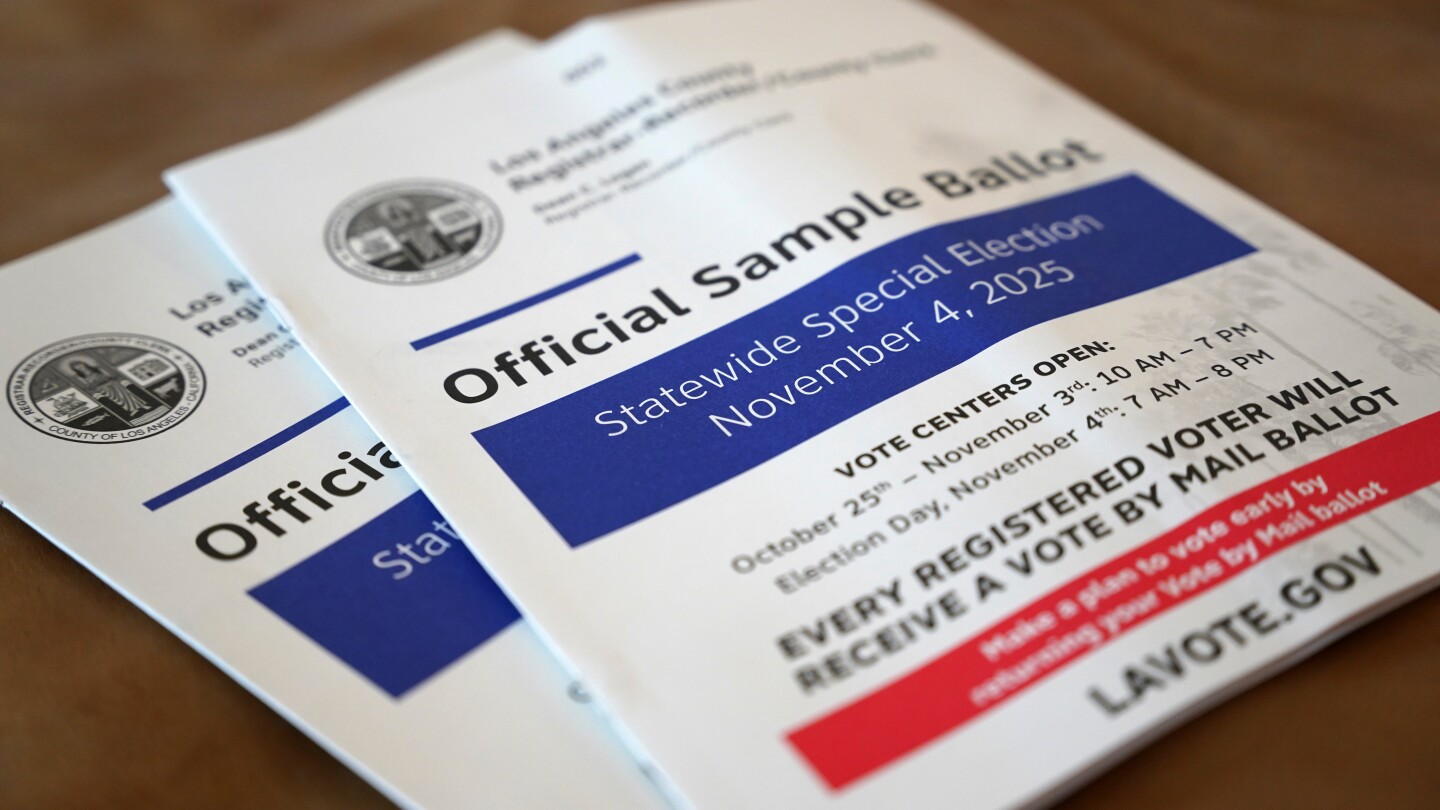UPDATE: Voting has just opened in California on a critical measure that could reshape the U.S. House of Representatives. Residents statewide are casting their ballots on Proposition 50, a proposal aimed at redrawing congressional district maps that could potentially add up to five Democratic-held seats in Congress. This vote, which is taking place today, is seen as a key battle in the ongoing struggle for control of the House ahead of the 2026 elections.
The implications of this measure are profound. With the current balance of power in the House at a razor-thin margin of 219-213 in favor of Republicans, the outcome of this election could significantly impact the political landscape. Democratic consultant Roger Salazar emphasized the stakes, stating, “2026 is the whole ball game.”
California’s proposition comes in the wake of President Donald Trump‘s efforts to secure Republican advantages in other states, particularly in Texas. The state has attracted tens of millions of dollars in campaign funding, including a substantial $5 million donation from the Congressional Leadership Fund, a super PAC linked to House Speaker Mike Johnson. Meanwhile, former President Barack Obama has voiced his support for the measure, labeling it a “smart” strategy against Republican tactics.
The election, which concludes on November 4, is not just about congressional maps; it also sets the stage for the 2028 presidential race, where California Governor Gavin Newsom is seen as a strong contender. In a fundraising message, Newsom urged Democrats to rally, declaring: “This is an all-hands-on-deck moment for Democrats.”
This special election represents a tactical move by Democrats to undermine Trump’s influence, as he seeks to fortify Republican positions in Texas. The contest has drawn national attention, as other states, like Missouri, consider similar redistricting efforts. The legal landscape remains uncertain, especially in Texas, where federal judges are currently deliberating on the legality of a newly drawn congressional map favoring Republicans.
If passed, the proposal could drastically alter the political map by reducing the number of Republican-held seats in California from five to potentially none, increasing Democratic representation from 43 to 48 out of California’s 52 congressional seats. The proposed districts would include unusual configurations, merging rural conservative areas with liberal strongholds, raising concerns among local farmers about their representation.
As the vote unfolds, key questions linger about voter turnout. Democrats hold a significant advantage in California, with registered Democrats outnumbering Republicans nearly 2-to-1. However, the unpredictable nature of ballot measures means that voter engagement is crucial. Many voters remain uninformed about this election, as noted by Kelsey Hinton from the Community Water Center Action Fund, who is working to mobilize Latino voters in the Central Valley. “People don’t even know there is an election,” she reported.
With campaigns vying for attention amid numerous national distractions, the stakes are incredibly high. Ads flooding the state’s media markets depict the battle as a fight for democracy versus a Republican power grab, echoing calls for urgent action from political figures like Arnold Schwarzenegger.
As voting continues, the nation watches closely. The results of this measure could not only influence California’s political landscape but also reverberate across the country, shaping the future of congressional representation and the balance of power in Washington. Stay tuned for updates as this critical election unfolds.
